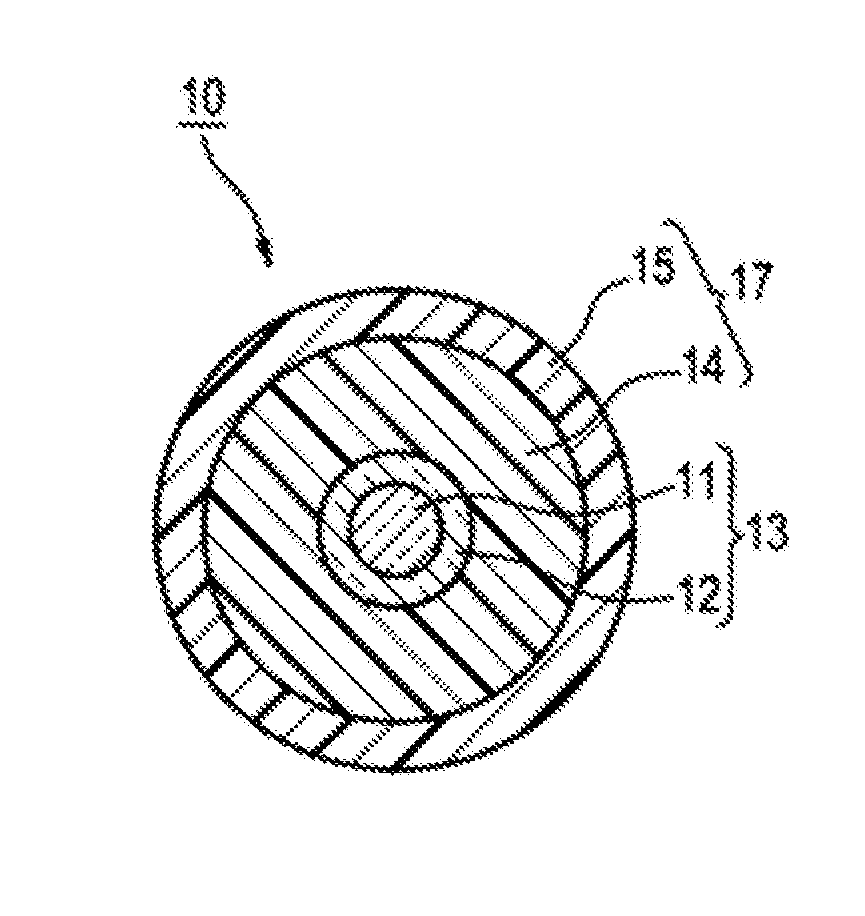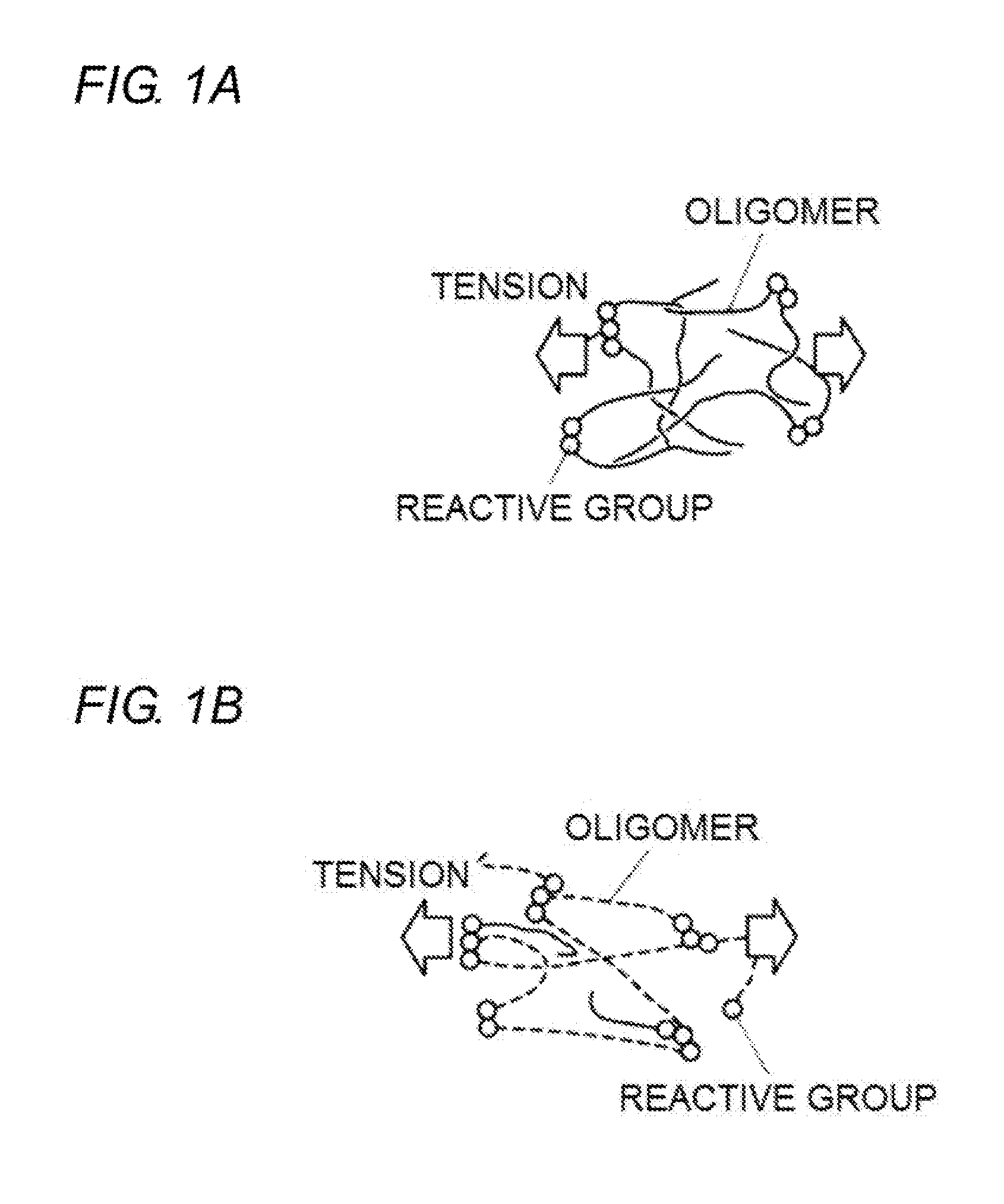Optical fiber
a technology of optical fiber and lateral pressure, applied in the field of optical fiber, can solve the problems of deterioration of increase in transmission loss, and poor resistance of optical fiber to lateral pressure, and achieve excellent resistance to lateral pressure and low-temperature characteristics, and reduce the modulus of young
- Summary
- Abstract
- Description
- Claims
- Application Information
AI Technical Summary
Benefits of technology
Problems solved by technology
Method used
Image
Examples
examples
[0063]The results of evaluation tests to which Examples according to the present invention and Comparative Examples were subjected are shown below to explain the present invention in more detail. The present invention should not be construed as being limited to the following Examples.
Production of Optical Fibers 10 and 20
[0064]As glass fibers 13, use was made of glass fibers which each had a core diameter of 50 μm, a cladding diameter in the range (90-110 μm) shown in Tables 1 and 2, and a refractive index profile shown in the Tables 1 and 2. The resin composition for forming a non-strippable resin coating layer, resin composition for inner-layer formation, and resin composition for outer-layer formation which respectively had the makeups shown below were applied to the peripheral surface of each glass fiber 13 and cured to form resin coating layers. Thus, optical fibers were produced. In the optical fibers each including the non-strippable resin coating layer, the outer diameter of...
PUM
| Property | Measurement | Unit |
|---|---|---|
| Length | aaaaa | aaaaa |
| Length | aaaaa | aaaaa |
| Percent by mass | aaaaa | aaaaa |
Abstract
Description
Claims
Application Information
 Login to View More
Login to View More - R&D
- Intellectual Property
- Life Sciences
- Materials
- Tech Scout
- Unparalleled Data Quality
- Higher Quality Content
- 60% Fewer Hallucinations
Browse by: Latest US Patents, China's latest patents, Technical Efficacy Thesaurus, Application Domain, Technology Topic, Popular Technical Reports.
© 2025 PatSnap. All rights reserved.Legal|Privacy policy|Modern Slavery Act Transparency Statement|Sitemap|About US| Contact US: help@patsnap.com



